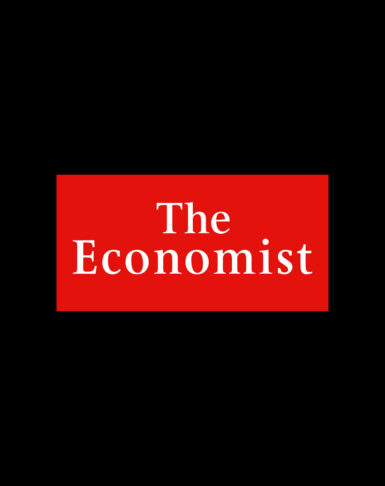The digital transformation of industry is often described as the Fourth Industrial Revolution (4IR). Propelled by transformative trends, 4IR emphasizes the interconnectedness of machines, real-time data exchange, automation, and intelligent systems to enhance efficiency, productivity, and innovation across industries.
Artificial Intelligence (AI) plays a pivotal role in the Fourth Industrial Revolution. Fully understanding – and then leveraging – the power and potential of AI will take some time, but many professionals are already integrating it into their working world. There is curiosity about how best to use AI and concern about the current-day job functions that it may largely – or entirely – replace.
As The Simplicity Company, we focus on leveraging AI to enhance team efficiency and effectiveness – to cut through the noise and help simplify. Within the creative realm of branding, opportunities are abundant, yet distinct roles within the industry have different concerns and applications regarding this revolutionary tool.
We speak to Harriett Hindmarsh, Chief Marketing Officer, AECOM and Nicholas Jenkins-Smith, Design Director, Siegel+Gale, about the role of AI in their everyday working lives. Both use AI in different ways, with the same objective: to enhance their day-to-day roles – and those around them – as working professionals.
What excites you the most about AI? Anything to be mindful of?
Harriet Hindmarsh: Undoubtedly, AI presents as an exciting game-changer for AECOM. While we are, like most organizations, relatively early in our journey of understanding AI’s power and potential, our focus on accelerating the adoption of digital-enabled project delivery approaches (like automated design) offers the opportunity for AI’s gradual, seamless and strategic integration across much of our operations – to improve our teams’ efficiency and elevate the standard of our client service.
Internally, within our Marketing and Communications team, AI has the potential to transform our roles, liberating us from mundane tasks and allowing us to work more efficiently and collaboratively. But there are two sides to the coin: AI, even at this point in time where the hype is in overdrive, has somewhat leveled the playing field. Competitors are developing their own AI strategies and leveraging Large Language Models for content generation to improve organizational productivity. We know we need to develop creativity and differentiation in our AI strategy. Therefore, I am focused on empowering a team that can think like a robot can’t —a team that uses AI to boost efficiencies and engages its intuition and T-shaped thinking to achieve stand-out results.
AI is a means to support our clients in solving their complex issues and make a real difference. Indeed, genuine excitement lies in AI’s potential to elevate sustainability initiatives to create and deliver a better world. We’ve initiated a dialogue with leadership to harness AI’s potential to streamline our services, particularly regarding sustainability data. ScopeX™, our approach to reducing carbon on our major projects, utilizes AI to predict how a project impacts the environment. Through AI, ScopeX™ scours vast databases for historical patterns, providing invaluable insights. This new mode of harnessing data has ensured we can deliver truly transformative results for our clients; ScopeX™ enables decarbonization across all our workflows, and helps our clients progress their own NetZero agendas.
Nicholas Jenkins-Smith: We are seeing the extraordinary potential and influence that AI will have on the full gamut of commercial creative that we offer. Some of the most exciting aspects of the technology lie in how it will revolutionize our approach to the planning, production, tracking, management and implementation of the brand experiences that we create.
Good, simple design is the distillation of intelligence, critical thinking and discernment in an appropriate format and, while AI offers transformative tools that we can use today, it is important not to be content with being ‘masters of syntax-based image generation’, but to continue to be ‘masters of craft’. Essentially, you want ‘the sharpest tools in the box using the sharpest tools in the box’, and so for now, a hybrid model will be the difference in alleviating a sea of soulless, generative images that do not appear to possess an attachment to a brand’s story.
While I am excited by the prospect of using more AI in our creative work, my reservations escalate to concern with the inevitable misuse of AI technology in visuals and video content, particularly as we approach elections in the UK and U.S. There will always be ‘bad actors’ with an adverse agenda for how these tools were intended to be used and the ability to manipulate video content and mislead a voting public could undermine the very essence of democracy. Will protocols like C2PA standards be effectively implemented within AI-generated content, at scale, to safeguard against such instances? – only time will tell.
It is imperative that we find a working balance to sensibly govern how we utilize AI in critical domains without stifling innovation and the ability for creatives to imagine a world beyond their heads, foster transparency and authenticity in our brand expression and communications.
How is AI simplifying your creative process/business?
HH: Simplicity is integral to our Marketing, Communications and Operations strategy—I see AI as an enabler of that simplicity.
Our clients value our global reach and innovation, and AI will progressively play a crucial role in allowing us to focus on innovation and differentiate ourselves in an increasingly level playing field. We are a “complex integrator,” adept at combining various service offerings across industries to craft bespoke solutions for clients.
We also recognize the need for collaboration and efficiency internally. Technology is a key enabler, and we are closely monitoring advancements in data management approaches to help simplify our ‘day-to-day’. Currently, our data is, to some extent, stored in silos across various teams, be they Finance, Sales or Marketing. We are exploring tools that can integrate these silos, ensuring a consistent approach to data and knowledge management. Microsoft Co-Pilot is noteworthy in this regard, promising to knit together multiple systems, contributing to our goal of easily accessible, consistent and high-quality data. This approach aligns with our commitment to providing a unified knowledge base for all teams, enhancing our collective market strength as a listed company.
NJS: We are trialing a few different tools that we hope will help our clients to better-define future pathways to successful brands and enable our teams to continue to drive simplicity in our work. For example, during the Discovery phase of a project, AI tools like Otter help to reduce repetitive, ancillary tasks, freeing up more of our time in finding a brand’s compelling truth and enable us to develop simple, creative ideas more efficiently.
Platforms like Runway and Midjourney have influenced the way I might approach the composition and development of visual assets/moving images in digital spaces and the ability to train the models on a given image allows us to be exhaustive in how we manage consistency and find new creative opportunities.
AI, in some instances has helped to augment our creative process, much like a ‘syntax-sounding board’ that can generate persona types, entire scenes and virtual environments, all while bringing our creative references to the fore. We also use AI as an ‘anti-tool’, enabling us to push our outputs beyond what has been generated and really interrogate the authenticity of what we have created.
However, saving time by generating quick ideas does not make for better ideas. We are in an interesting space with AI usage in our sector, but, to what (long-term) cost to self-expression, a sense of ownership and agency over the work. That will be determined by the creatives that wield the tools at hand.



